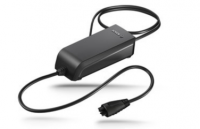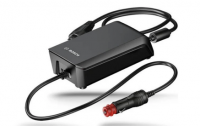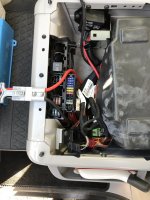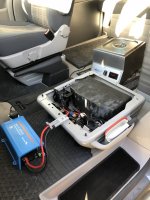View attachment 56230
I've just bought myself a brace of 600w Zero 9 electric scooters for "sh1ts & giggles".
The charger states the following:
Model: GJS150-5460200
INPUT: AC100-240v~ 50/60Hz Max 1.6A
OUTPUT: DC 54.6v - 2.0A
The battery shows: 48v 10.4Ah
I'm running a single 120W panel from
@Roger Donoghue with the WRM15 controller. From reading a previous thread
@Roger Donoghue states "
from a 120 w Cali panel I'd expect around 6 amps"
Electrickery has never been a strong point of mine. It's a dark art as far as I'm concerned!
@Skewif has a similar powered eBike and says:
- Would a 300W inverter serve my purposes also?
- Additionally I'm guessing I'd need a pure sinewave as opposed to a modified sinewave inverter.
- A google search of "300w inverter" however returns a whole multitude of results and an insane range of prices. Ranging from £29 to £99!! Is there a specific one that would particularly suit my requirements that anyone would recommend please?
Thanks








 Thanks
Thanks











